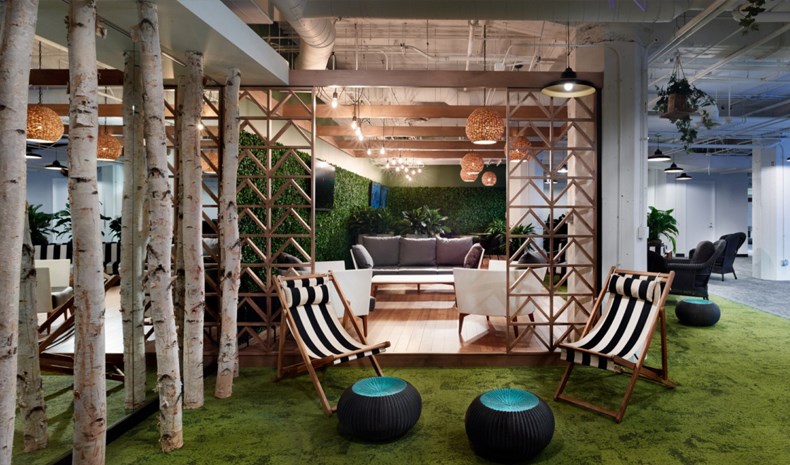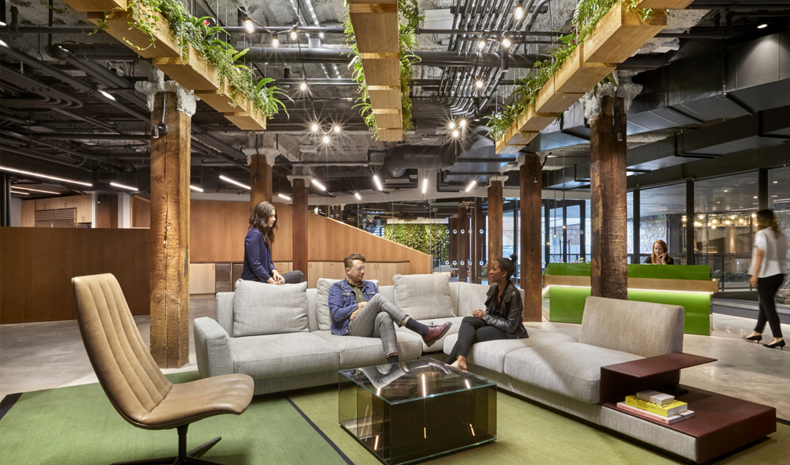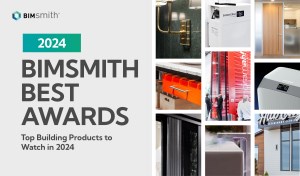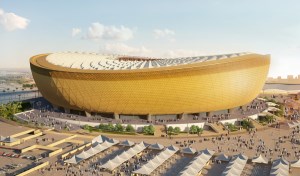Companies are progressively learning how to shrink their carbon footprint while simultaneously meeting eco-consumer demands by developing sustainable office spaces. These spaces put environmental conservation first and work with local ecosystems rather than exploiting them.
Why Are Designers Implementing Biophilic Design?
Interior designers are engaging with biophilic design to influence deeper connections between humanity and the natural world. Conventional office buildings optimize space by expanding structures upwards. Builders generally focus on producing the highest financial outcomes from workplace designs.
Biophilic design meets eco-conscious ideals by integrating conservation features that can also enhance employees’ health, well-being, and fitness. It creates the possibility of a healthy environment for people as they reside in modern structures. Eco-conscious office buildings have also been shown to improve employees’ productivity rates.
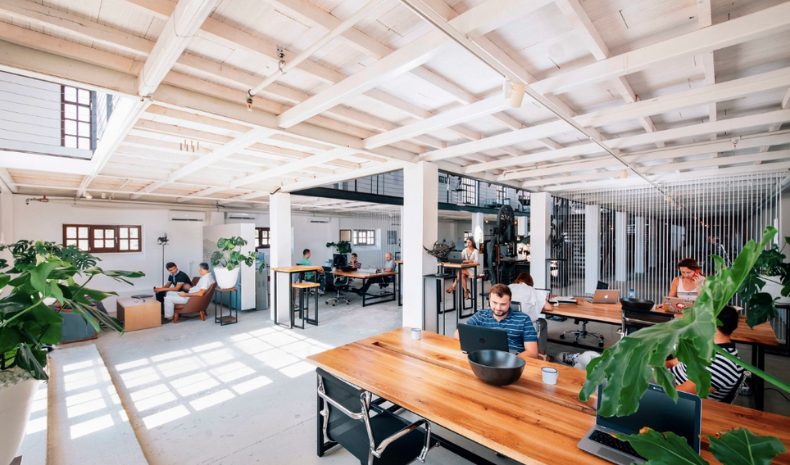
Source: Innovation Centre Coworking
Another reason designers incorporate biophilic features into their projects is to decrease greenhouse gas emissions. An office’s lighting, ventilation, and temperature control systems contribute around two-thirds of its emissions. Shrinking a company’s carbon footprint can increase its eco-consumer appeal, even simply by outpacing its competitors' green initiatives.
Finally, sustainable improvements also provide benefits for future government regulations. As the world grows more progressive in its approach to green initiatives, biophilic design contributes to future-proofing commercial projects from new green requirements.
Biophilic Design In Practice
Forest City Offices
Forest City’s offices incorporate green designs into the workplace using natural lighting features. The company’s designers installed plant lamps in the workspaces to bring aspects of the outdoor environment inside. The lights replicate hanging plants and contain light-emitting diode (LED) bulbs.
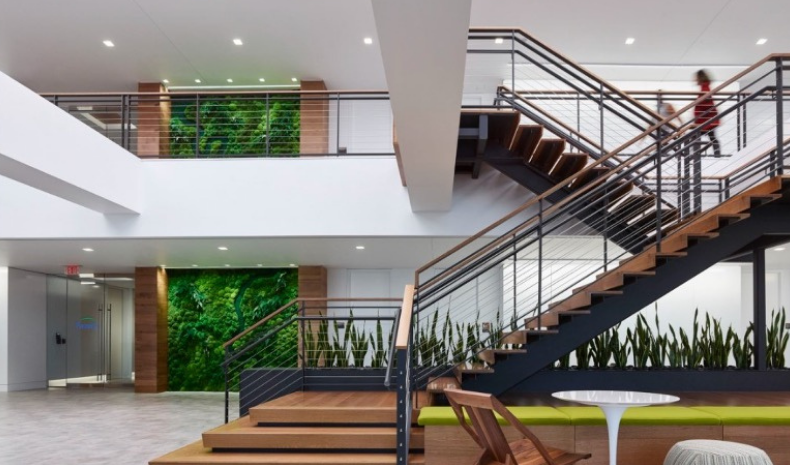
Source: Forest City Offices
LED lights are better for humans’ mental health and the environment. The bulbs are nearly 90% more energy-efficient than conventional incandescent lights. They also last about 25 times longer and generate less landfill waste over time.
Engineers also installed lights that mimic natural lighting using a thin coating of nanoparticles. The particles replicate Rayleigh scattering, which dims lights and reflects blue colors. Other office space designers can place the lights on ceilings to imitate a skylight and support plant growth in central rooms.
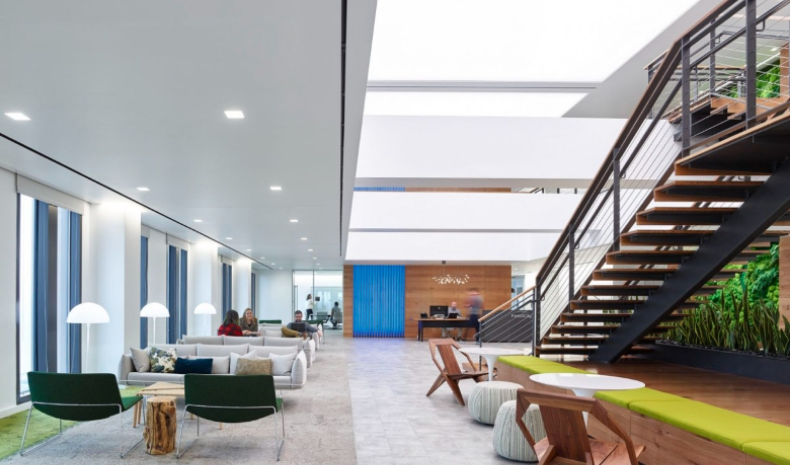
Source: Forest City Offices
Forest City’s natural light replication design also contributes to its employees’ mental health. The light changes colors and intensity throughout the day to mimic natural solar cycles. Individuals’ sleep cycles may improve as they experience organic light adjustment patterns.
The intensity and consistency of artificial lights suppress melatonin secretion. Without exposure to natural cycles, individuals experience frequent nighttime waking, which can decrease employees’ job satisfaction, work quality, and motivation.
Zion National Park Offices
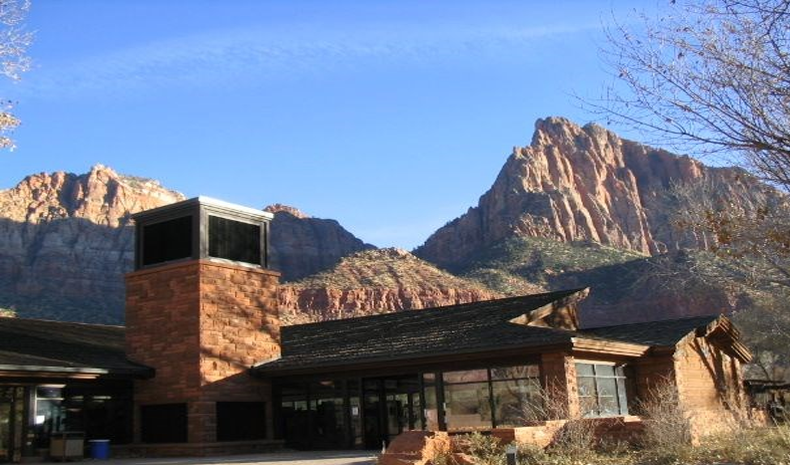
Zion National Park Office - NSP.gov
The visitor center and office building at Zion National Park sought to improve employees' access to natural lighting by installing more windows. The windows increase the space’s access to natural ventilation. Artificial ventilation systems consume nearly 30% of conventional offices’ energy supplies and produce greenhouse gas emissions.
The natural ventilation features rely on buoyancy and wind to move outdoor air inside. Government regulations like the international building code (IBC) 2015 require commercial buildings to move fresh air indoors. Professionals developed IBC 2015 to improve workers’ health by addressing safety limitations in the built environment.
Reducing indoor contaminants like volatile organic compounds (VOCs), pollen, and mold can improve national park employees’ lung health. Indoor mold increases workers’ risk of asthma, pneumonitis, and respiratory infections. The building’s designer increases natural ventilation by opening the windward and leeward sides of buildings.
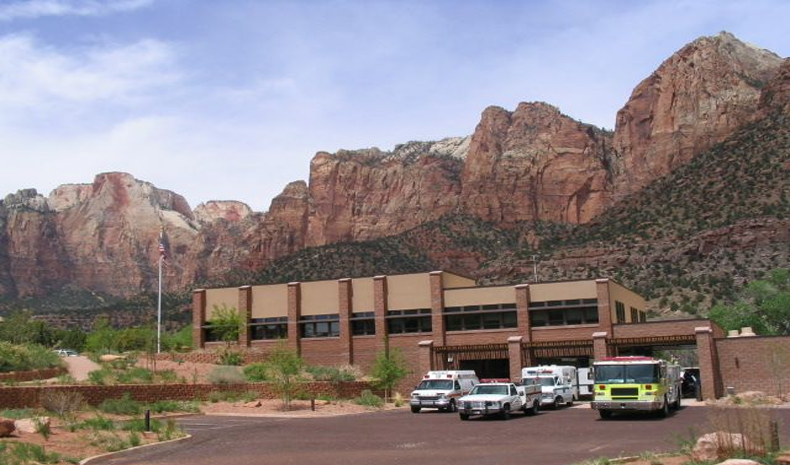
Zion National Park Offices - NSP.gov
Wind creates positive pressure on the windward side and negative pressure on the leeward side. The pressure differentiations move stagnant air through an office and remove respiratory irritants.
More subtly, inviting a natural breeze into buildings connects workers to the outdoor environment, which influences their appreciation for Earth’s ecology and provides a calming effect.
Uptake Headquarters
Another feature of biophilic buildings is their natural materials. With this in mind, the designers of Uptake’s headquarters incorporated greenery into the workplace by adding wood and bamboo to the structure. The office's wood floors improve employees’ health by minimizing carpeted spaces.
Wood floors are better for lung health than carpets because carpets trap pollutants. Carpets can hold mold, lead, dust, and other pollutants. They may also trap toxic particles indoors, which become airborne when individuals vacuum.
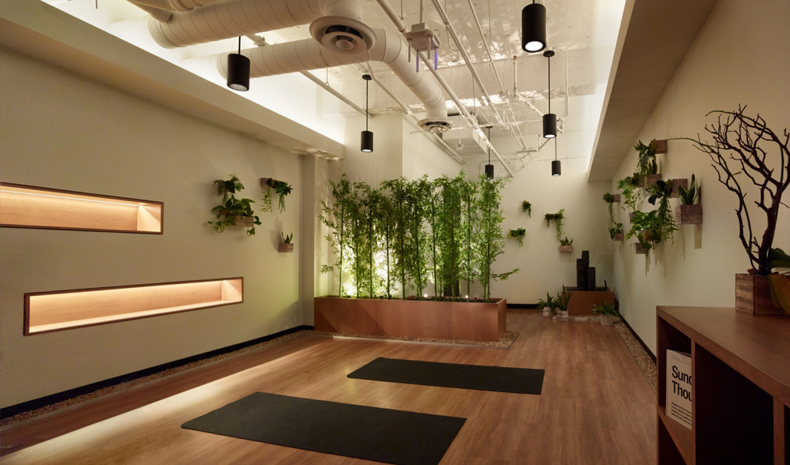
Uptake Headquarters - James John Jetel
The designers also created biophilic features at the Uptake headquarters using low-impact materials. Bamboo is a more sustainable material than other natural woods. It grows faster than other materials and uses fewer resources.
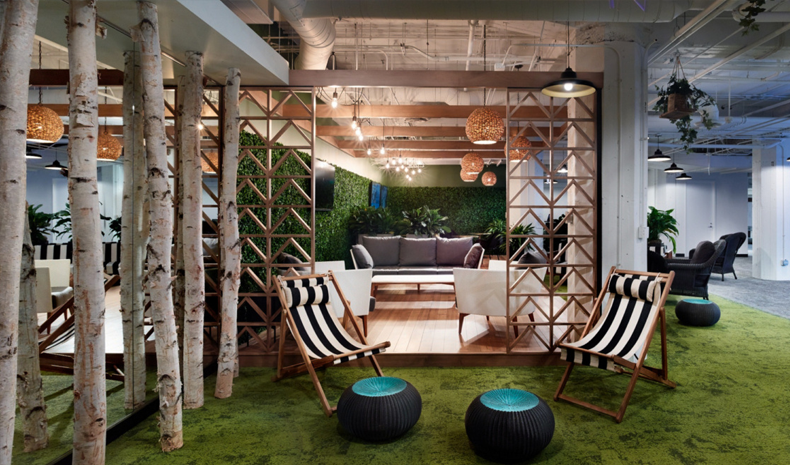
Uptake Headquarters - James John Jetel
Construction professionals added bamboo and wood floors, walls, tables, chairs, and other features to the office which connects the employees to natural elements. Individuals may feel more in touch with nature when organic materials surround them. Increasing the number of plants in a workspace also deepens individuals’ connection with the environment.
United Technologies Digital Offices
Some interior designers are hoping to improve individuals’ mental and physical health by building living walls. United Technologies’ digital offices have living walls that contain complementary plant species with similar light requirements. The walls hold a layer of packed soil beneath a confinement grid.
Most species in plant walls have low water requirements. They also naturally filter out indoor pollutants. Vegetation relies on air contaminants like carbon dioxide to grow. Large forms of vegetation, like trees, may absorb and filter over 48 pounds of carbon annually.
United Technologies Digital Offices - Garrett Rowland
The digital offices’ plant walls also improve employee health and well-being. Decreasing indoor pollution protects respiratory health and greenery improves individuals’ moods.
For some time, modern psychology has recognized the color green’s effects on mental health. Research has found that the color creates feelings of relaxation and restfulness. Inside office buildings, greenery may increase endurance and stability. It can also decrease anxiety and stress, helping United Technologies’ employees access “deep work” states.
The Challenges of Adopting a Biophilic Office Design
One significant challenge of adopting biophilic designs in offices is finding a construction professional who’s conversant in the principles. Office building owners may feel ready to access the ecological and economic benefits of natural designs but may struggle to access the necessary renovation resources.
Thankfully, the construction industry is experiencing a sustainable shift, and the number of biophilic designers looks to increase over time.
Another common challenge involves funding. Governments often offer tax incentives for sustainable building additions like solar panels. Over time, governments may offer funding for biophilic renovations to support global environmental conservation efforts.
Is a Biophilic Design Right for Your Project?
Buildings with limited access to natural lighting and green elements may benefit tremendously from adopting biophilic features.
When business owners recognize low productivity rates and poor morale, they may consider adding more greenery to their offices. And if companies are looking to reflect their sustainability values, they can integrate biophilic features to represent the interdependent connection between humanity and Earth’s ecology.
--
Rose Morrison
Rose Morrison is a construction and design blogger and the managing editor for Renovated. To read more posts by Rose, check out her blog.



